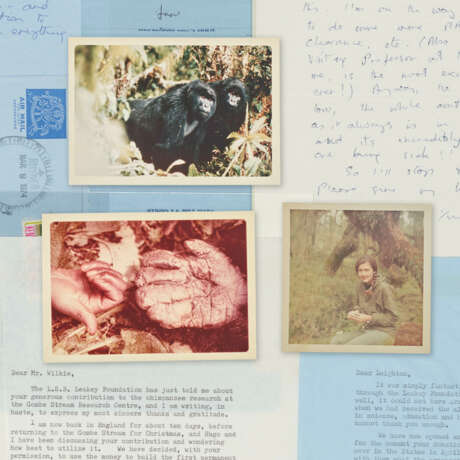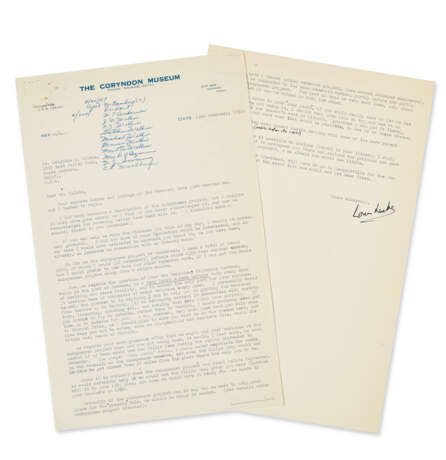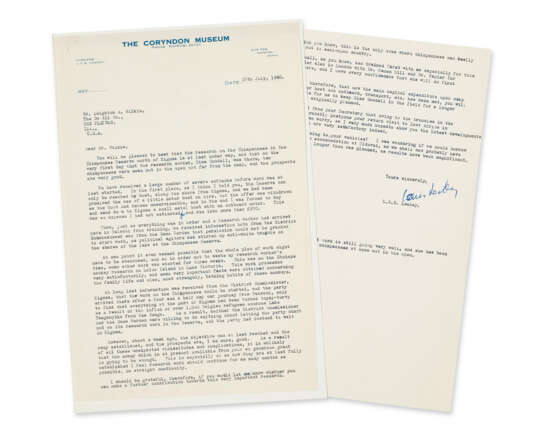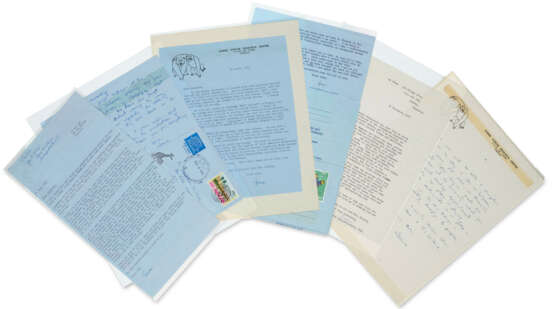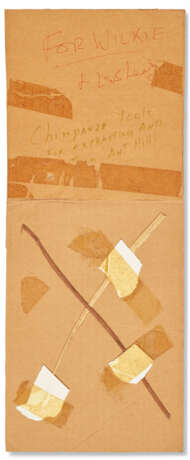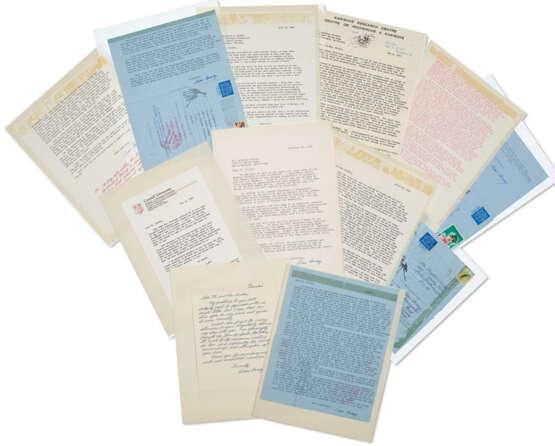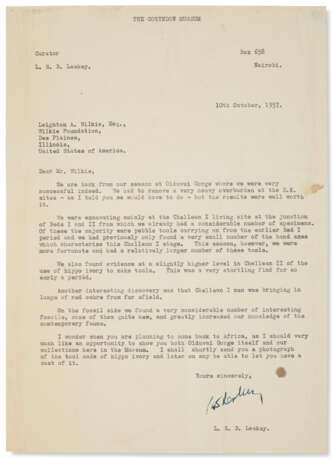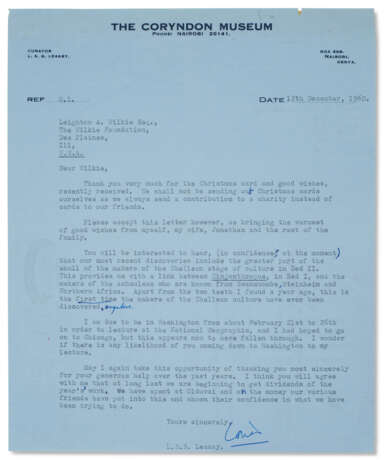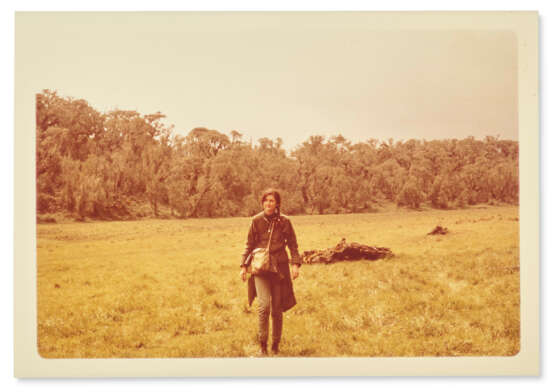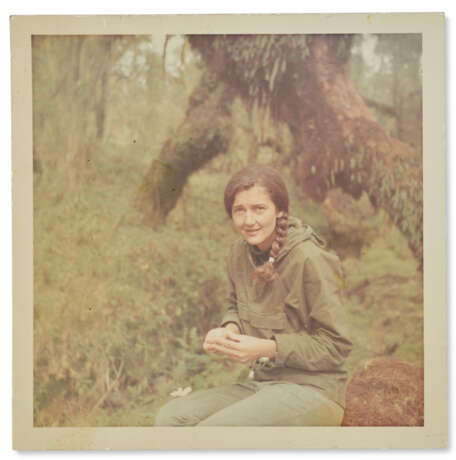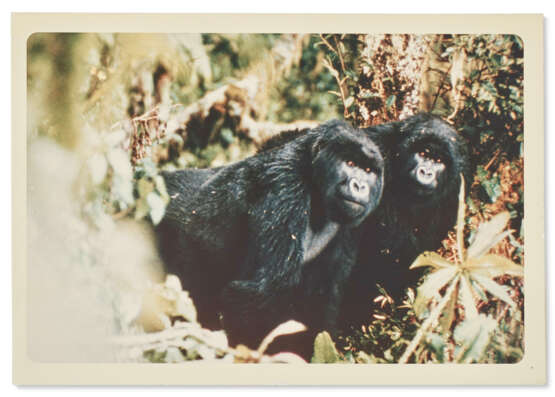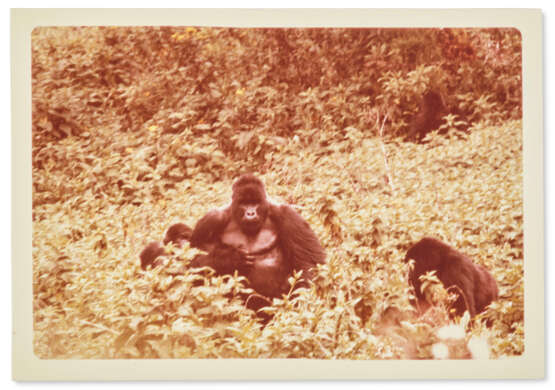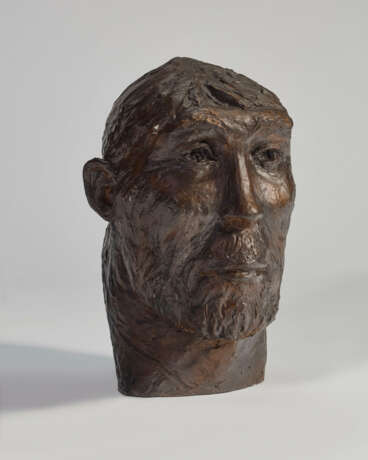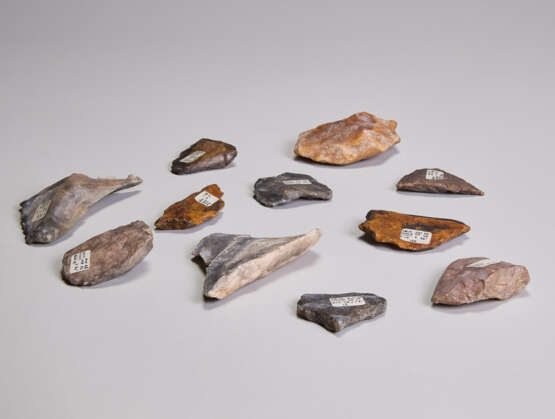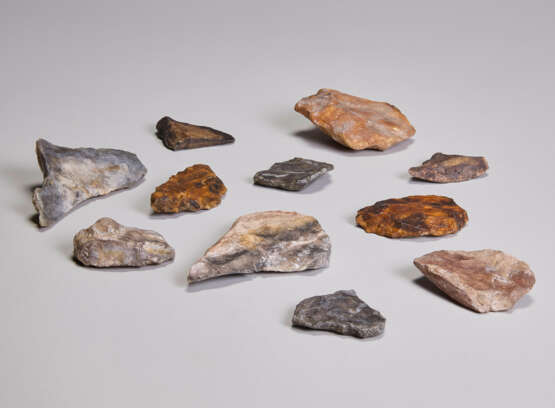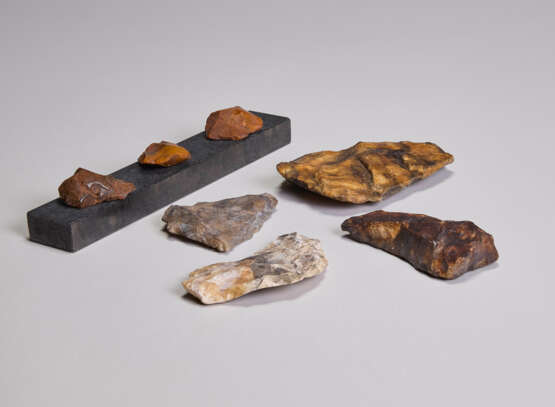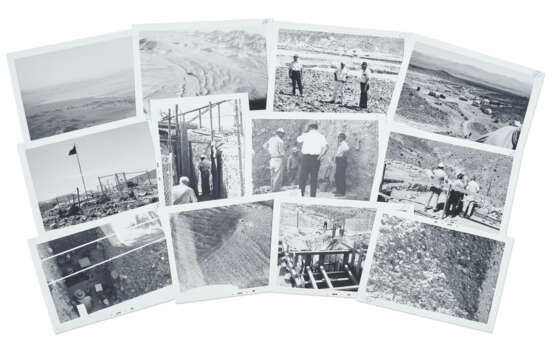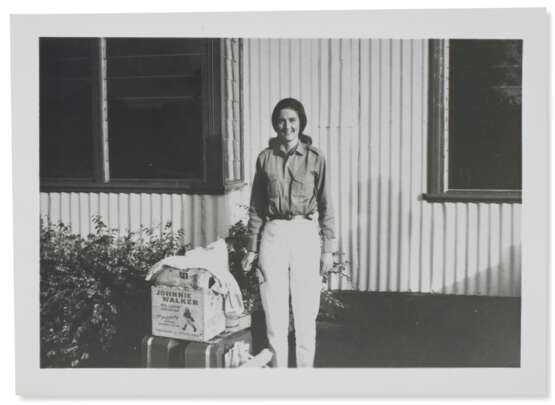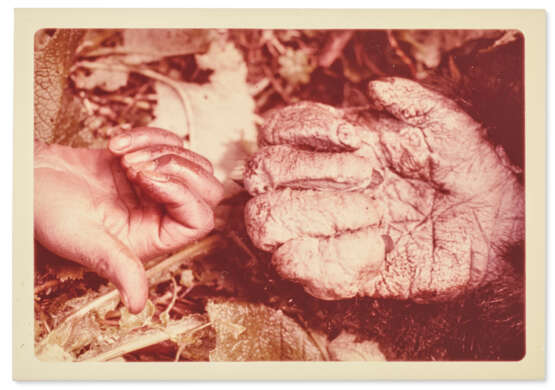ID 1279147
Lot 3 | CORRESPONDENCE FROM LOUIS LEAKEY, DIAN FOSSEY, AND JANE GOODALL
Estimate value
$ 40 000 – 60 000
TO THE WILKIE BROTHERS FOUNDATION, 1950s-80s
LEAKEY, Louis (1903-1972). Approx. 60 typed and autograph letters signed, the majority to Leighton Wilkie, 1959-1969; including example of chimpanzee tools collected by Goodall. [With:] GOODALL, Jane (b.1934). 7 autograph and typed letters signed to Leighton Wilkie, 1970-1983. [With:] FOSSEY, Dian (1932-1985). 14 typed and autograph letters signed, the majority to Leighton Wilkie, 1966-1984. [With:] Related material, including over 75 photographs; 37 castings of Calico Hills artifacts, various sizes, cast by FD Casting, 1968 (including a plaster cast, 16 by 12 inches, sculpted head of Zinjanthropus, called the ''Nutcracker Man," commissioned by Leighton Wilkie to celebrate Leakey's discovery); outgoing carbons from the Wilkie Brothers Foundation with related correspondence, offprints and other printed material.
"I am sure you will be most interested to hear that [Jane Goodall] has, amongst other important results, a great deal of evidence (which is covered by both still and movie photographs) which shows that chimpanzees, in wholly wild conditions, make deliberate tools for certain specific feeding purposes. This discovery which is reported briefly in a scientific paper which will be published shortly by Goodall, has caused anthropologists at a recent international meeting to alter our definition of 'Man'." — Louis Leakey, 15 November 1962
An important archive including letters from Louis Leakey, Jane Goodall, and Dian Fossey to the Wilkie Foundation, surrounding their groundbreaking work in primatology in the 1950s & 60s. The majority of letters are from pre-eminent paleoanthropologist and archaeologist Louis B. Leakey to Leighton Wilkie, whose family foundation supported anthropological expeditions and sites overseas, notably including Jane Goodall and Dian Fossey's earliest work. Wilkie, an inventor and entrepreneur who founded the international DoAll Group—making and distributing machine tools and other industrial equipment—shared an intense interest in primitive tools and toolmaking, as well as Early Man. Leakey writes regarding digs at Olduvai Gorge and Calico Hills as well as his work with Goodall and Fossey and their respective research on chimpanzees and gorillas. The letters are together with related material including photographs, offprints, casts of discoveries, and an example from Jane Goodall of chimpanzee tools collected in the wild.
Louis Leakey, Jane Goodall, and Dian Fossey are renowned for their groundbreaking work in primatology and contributions to our understanding of human evolution and behavior. Leakey's discoveries in East Africa—including fossils of early hominids—significantly advanced the study of human origins. Recognizing the importance of studying living primates, Leakey supported and mentored Goodall and Fossey. Goodall's extensive field research on wild chimpanzees in Gombe, Tanzania, revealed their complex social behaviors, tool use, and emotional lives, fundamentally changing perceptions of primates and humans. Dian Fossey conducted in-depth studies of mountain gorillas in Rwanda, highlighting their social structures and the threats they faced from poaching and habitat loss, which led to increased conservation efforts. Together, their work has profoundly influenced anthropology, primatology, and conservation.
The archive is comprised of four sections. In the first, Leakey writes on Coryndon Museum, Nairobi, letterhead regarding research on chimpanzees and vervet monkeys, funding, and setbacks. He discusses the work of Jane Goodall, who at the time was only 26 years old and at the start of her career. Leakey writes on 26 July 1960 to Wilkie: "You will be pleased to hear that the research on the Chimpanzees in the Chimpanzee Reserve north of Kigoma is at last under way, and that on the very first day that the research worker, Miss Goodall, was there, two chimpanzees were seen out in the open not far from the camp, and the prospects are very good." A post-script to the same letter notes: "Miss Goodall reports that work is still going very well, and she has been observing as many as ten chimpanzees at once out in the open."
By 15 November 1962, Leakey writes: "I am sure you will be most interested to hear that [Jane Goodall] has, amongst other important results, a great deal of evidence (which is covered by both still and movie photographs) which shows that chimpanzees, in wholly wild conditions, make deliberate tools for certain specific feeding purposes. This discovery which is reported briefly in a scientific paper which will be published shortly by Goodall, has caused anthropologists at a recent international meeting to alter our definition of 'Man'."
Letters from Goodall to Wilkie span from 1970-1983 and report on the work in Kigoma, where she has named one of her subjects "Little Wilkie." Her 11 December 1979 letter reports on her in-progress monograph on chimpanzee behavior, noting that "a monograph based on 20 years of research is a time consuming project." She makes reference to her famous observations regarding female-led infanticide in chimpanzees, asking first about an upcoming issue of National Geographic: "With the tale of warfare and cannibalism among the chimps? They do become more like us humans all the time!" She goes on to discuss the mother-daughter pair Passion and Pom and their behavior, first as "murderesses" and then as mothers. "Now that the infant killing has stopped, there is a baby boom, 11 infants, all thriving, all growing up at the same time. It is really fascinating. A much nicer chapter in Gombe's history has opened." Other letters refer to funding and progress, with students and plans to build the first permanent structure at Gombe Stream. She also sends an inscribed offprint of "Nest Building Behavior in the Free Ranging Chimpanzee." These letters are together with other related incoming correspondence to Wilkie, Wilkie's outgoing carbons, photographs, and printed material.
In the second section, Leakey discusses the work of George Schaller on the study of the Mountain Gorilla, which he suggests is incomplete. On 3 February 1966 he writes to Wilkie of Goodall's "magnificent job of her research" and asks about launching "a similar piece of research" to continue where Schaller left off; to this end, he finds Dian Fossey and arranges her to train with Jane Goodall. Leakey's letters otherwise touch on funding and he promises to send Wilkie some primitive tools, which likely corresponds to a makeshift cardboard folder including a blade of grass and a stick collected by Goodall—it has been docketed: "Chimpanzee tools for extracting ants from ant hills."
Fossey's letters to Wilkie are richly detailed in her descriptions of her work in Rwanda and elsewhere. On 25 May 1967 she notes she has 205 hours of observation from 86 contacts with four groups totaling about 60 members. She updates him that "within the past month, especially this past week, there has been tremendous progress made in the habituation of one group due to the unbounded curiosity of one blackback male who seems to initiate the advance of the other members." She admits that there are some hazards and relates an incident "not too long ago [when] one of the silverbacks decided to eradicate me and came charging down the hill without warning … like a runaway locomotive. I remember looking up at his long canines and thinking, this isn't supposed to happen…" Her reports extend all the way to 1984 when she writes that "Work at Karisoke is truly going well in its seventeenth year." Other materials include Wilkie's outgoing carbons; copies of Fossey's reports forwarded to Wilkie from Leakey, as well as copies of other Fossey letters; photographs of Fossey and animals (with a folder of negatives); and related printed material, including a Leakey offprint, "An Early Miocene Member of Hominidae," inscribed, "For Leighton Wilkie with my best wishes Louis May 17 67."
The third section includes letters from Leakey to Wilkie on his work at Olduvai Gorge in Tanzania, where his and his wife Mary's excavations led to their famous 1959 discovery of significant early hominid fossils—including the 1.8 million-year-old Zinjanthropus boisei, now called Paranthropus boisei, referred to it as “Zinj” or “Dear Boy” and nicknamed “Nutcracker Man” by the press because of its large jaws and teeth (the discovery seems to appear as a hastily written postscript in Leakey's letter of 10 August 1959—in part, "I have a most wonderful new find at Olduvai..."). Leakey also reports on his work on tools, with mention of discoveries—for example writing on 10 October 1957 about learning of the use of hippo ivory to make tools as "a very startling find for so early a period." He also plans for a new site at Marsabit Cross Roads, discusses funding, mentions of political difficulties in Uganda and the Congo, and conveys logistics. There is also a c.1961 report to the Wilkie Foundation on 18 months of Goodall's research, as well as several photos of discoveries from Leakey, together with carbons of Wilkie's outgoing (including 18 September 1959 reference to "your tremendous discovery"). There are also offprints by Leakey, including "Recent Discoveries at Olduvai Gorge, Tanganyika," as well as other printed material and transparencies of photos.
The fourth section includes letters from Leakey to Wilkie starting in 1968 regarding funding of the Calico Hills site, where he sought to prove the presence of early human tools in North America, potentially dating back 200,000 years. There is a report on the site, as well as photos from the dig along with an explanatory letter. His 6 August 1969 letter speaks to the controversial nature of his findings, as many in the scientific community disputed that the artifacts he found were man-made rather than naturally occurring; he states that he feels strongly that they should make casts of discoveries available to his leading critics, and suggests making a set of 30, which are present in the lot. These items are together with related correspondence from the Wilkie Foundation and printed material.
7 boxes total, various sizes, comprising five boxes of archival material and two boxes of casts packed in custom foam.
Provenance
Anonymous sales; Bonhams New York, 20 June 2007, lots 5086-5087 and 4 December 2007, lots 3048-3049.
Acquired at the above sales by the late owner.
| Place of origin: | Africa |
|---|---|
| Auction house category: | Letters, documents and manuscripts, Books and manuscripts |
| Place of origin: | Africa |
|---|---|
| Auction house category: | Letters, documents and manuscripts, Books and manuscripts |
| Address of auction |
CHRISTIE'S 8 King Street, St. James's SW1Y 6QT London United Kingdom | |
|---|---|---|
| Preview |
| |
| Phone | +44 (0)20 7839 9060 | |
| Buyer Premium | see on Website | |
| Conditions of purchase | Conditions of purchase |
